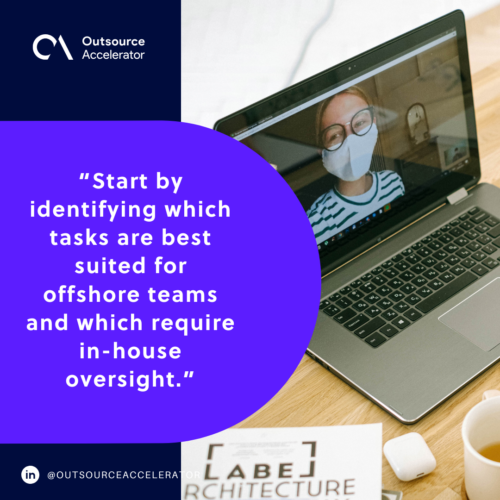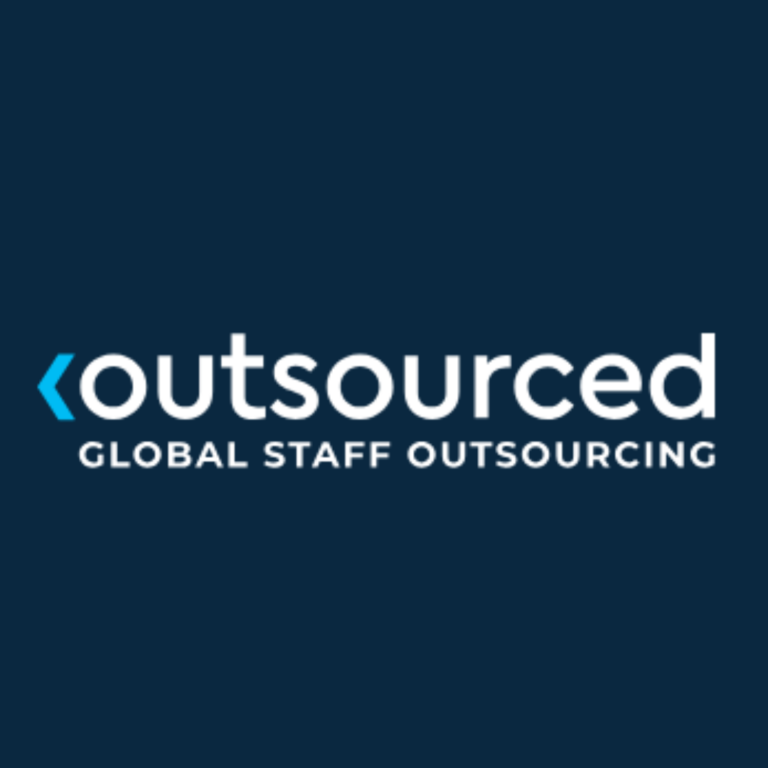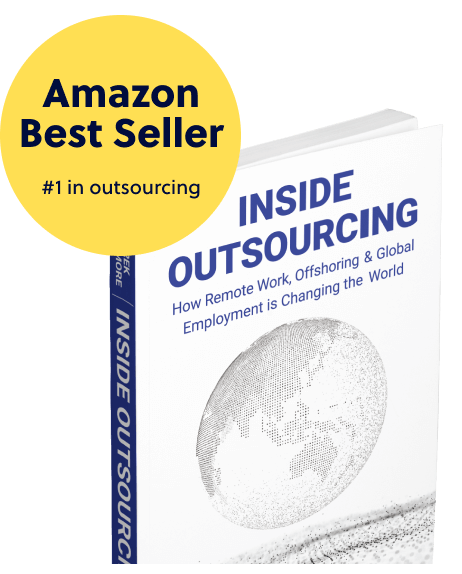Offshore talent, in-house culture: The strategic hybrid workforce advantage

Tired of the relentless pressure to scale up without seeing your budget shrink down? Forget the old binary choice between expensive in-house staff and unpredictable freelancers. The real power move today is the hybrid workforce.
This model successfully unites your core team, focused on culture and vision, with specialized, high-impact offshore professionals ready to handle the heavy lifting and operational growth.
For ambitious SMEs, this model is the secret handshake to doing more, better, and finally turning tight margins into massive momentum.
Understanding the hybrid workforce model
A hybrid workforce is more than a mix of remote and in-office staff. It’s a deliberate structure where businesses balance offshore talent with internal teams to maximize productivity, expertise, and flexibility.
The hybrid model has become widely adopted, with Gallup reporting that 52% of US employees with remote-capable jobs currently use it.
While in-house staff handle core strategy, offshore professionals take on critical operational and technical roles that don’t require a physical presence.
For SMEs, the hybrid workforce model is particularly powerful. Hiring locally for every role can be expensive and time-consuming.

By leveraging offshore talent, businesses can access a global pool of skilled professionals without inflating payroll costs, such as:
- Developers
- Accountants
- Designers
- Customer support agents
At the same time, maintaining a strong in-house presence ensures that company culture, vision, and leadership remain intact.
This structure allows businesses to scale quickly, adapt to fluctuating workloads, and operate efficiently across time zones. It’s a solution built for growth-minded entrepreneurs who want flexibility without losing control.
Benefits of combining offshore talent with in-house culture
The synergy between offshore professionals and your in-house team unlocks powerful, dual benefits for growth and stability:
1. Cost efficiency without compromise
One of the most immediate advantages of a hybrid workforce is cost optimization. Offshore talent can often deliver high-quality work at a fraction of local salaries.
For those still doubting, ISG found that enterprises that outsource business processes report average cost savings of 15%.
SMEs can reallocate savings toward growth initiatives, marketing campaigns, or product development — without sacrificing output or expertise.
2. Access to specialized skills
Not every skill is available locally, especially for niche roles. By integrating offshore talent, businesses tap into a diverse, highly skilled workforce.
Whether it’s coding, digital marketing, bookkeeping, or customer service, offshore professionals bring specialized knowledge that complements the in-house team.
3. Round-the-clock productivity
With teams in different time zones, a hybrid workforce enables 24/7 operations. While your in-house staff sleep, offshore talent can continue work, ensuring faster project turnaround and continuous customer support.
For SMEs looking to compete with larger enterprises, this time-zone advantage is a powerful differentiator.
4. Maintaining company culture
Many businesses worry that offshore staff might not align with their values or culture. A hybrid approach solves this by keeping a core team in-house to instill and reinforce culture.
Meanwhile, offshore professionals integrate into this framework through clear processes, communication protocols, and company-wide alignment.
The result: seamless collaboration without cultural dilution.
Building and managing an effective hybrid workforce
Creating a successful hybrid workforce requires more than hiring offshore talent — it demands strategy, structure, and communication.
Define roles clearly
Start by identifying which tasks are best suited for offshore teams and which require in-house oversight. This clarity ensures efficiency and accountability, preventing overlap or confusion.
Leverage technology
Tools like project management software, time-tracking apps, and communication platforms are essential. They bridge the gap between offshore and in-house teams, keeping everyone aligned and productive.
Foster integration and engagement
Offshore talent should feel like a true extension of your company, not a separate entity. Regular check-ins, team meetings, and shared goals encourage collaboration.
Celebrate wins together, provide professional development opportunities, and nurture relationships across time zones. A well-integrated hybrid workforce feels like one cohesive team, regardless of geography.
Prioritize security and compliance
With offshore work comes responsibility. Implement clear protocols to protect sensitive business data, adhere to compliance standards, and safeguard intellectual property.
The right approach ensures your offshore talent operates securely while you focus on growing your business.

Outsourced: Your bridge to a high-performing hybrid workforce
For SMEs looking to implement a hybrid workforce without the usual headaches of recruitment, training, and management, Outsourced offers a proven solution.
They specialize in providing top-tier offshore talent in the Philippines, perfectly suited to complement in-house teams.
Here’s why Outsourced stands out:
- Access to elite talent: Only the top 1% of professionals are recruited, ensuring high performance across roles.
- Significant cost savings: Businesses can reduce labor costs by up to 75% while maintaining quality.
- Managed HR support: Outsourced handles recruitment, onboarding, and retention, giving SMEs peace of mind.
- Seamless integration: Offshore teams work alongside in-house staff, preserving your company culture and values.
Whether you need developers, marketers, accountants, or customer support, Outsourced helps SMEs build scalable, high-performing hybrid teams that accelerate growth.
Combine the best of offshore talent with your in-house culture. Partner with Outsourced today to build a hybrid workforce that drives efficiency, productivity, and success.







 Independent
Independent




